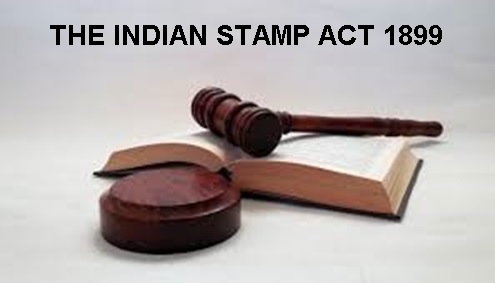The basic function of a trademark is to distinguish goods or services from one source from that of the other. The concept of distinctiveness is the hallmark of a trademark. The principle that “every trademark is a mark, but every mark need not be a trademark” needs to be understood. What makes a mark to graduate to a trademark is primarily the ability of a trademark to have distinctiveness in its function of creating an identity to goods and services of one person from that of the another.
Further the law (The Trademarks Act, 1999) at present also requires graphical representation of the mark as an indispensable condition for registration. Trademarks can also include shape of goods, packaging and combination of colours. Though registration of trademark is optional, registration is highly recommended as it enables protection of the registered trademark under the Trademarks Act, 1999 against any infringement. Further registration helps in proving one’s ownership of the trademark instantaneously. Trademark is generally referred to as brand in commerce.
One of the public policy objectives given for trademark law is consumer protection, that is, to prevent the public from being misled as to the origin or quality of a product or service so as to avoid unfair competition. Confusion or deception is a common ploy that a wily person adopts to cash on the popularity and goodwill of an established trademark or brand in the market. A trademark owner also uses trademark law to prevent unauthorized third party use of a mark which is identical to the owner’s mark, or which is so similar that use of the other party’s mark would result in a likelihood of confusion.
The basic principle that courts adopt while determining the likelihood of confusion of a trademark is the principle enunciated by Supreme Court of India in National Sewing Thread Co. Ltd v. James Chadwick & Bros. Ltd(AIR 1953 SC 357)that
- the burden of proving that the trademark concerned is not likely to deceive or to cause confusion, is upon the applicant.
- the real question to decide in such cases is to see as to how a purchaser, who must be looked upon as an average man of ordinary intelligence, would react to a particular trademark, what association he would form by looking at that trademark, and in what respect he would connect the trade mark with the goods which he would be purchasing.
Recently the Madras High Court in V.S.G.Lungi Company Vs Jayam Textiles (2019(77)PTC277[Mad]) Facts of the case is that the Defendant had applied for registration of “Eral” brand.
The Plaintiff had sued the Defendant on the ground that they are owners of registered brand “Nandu” in Class 24 for textiles and textile goods and predominantly their mark is a well-known mark for lungies. The Plaintiff found in the market place lungies carrying “Eral” brand which was carrying labels almost identical to that of the Plaintiff. The suit was for injuncting the Defendant from using the offensive labels on their goods. The Plaintiff had represented to the Court that in the 10 years ending 2011-2012 they have achieved the gross turnover of Rs.45 Crores and they have spent Rs.1,27,00,000/- towards advertisement expenditure. The Madras High Court did a comparison of the labels of Plaintiff and the Defendant appearing on the packaging placing it side by side. The High Court held that imitation was such that a man of average intelligence with ordinary prudence and with imperfect recollection is likely to be lulled into the belief that what he is seeing now is same as what he saw earlier. The High Court held that an ordinary man is bound to believe that the Defendant’s offending mark is actually is that of the Plaintiff’smark.
The High Court granted perpetual injunction restraining the Defendant from selling his goods carrying the label “Eral” and imitating in any manner in the trading style of “Nandu” brand. The High Court added that the Defendant is a habitual infringer. When interim order against the Defendant was passed the Defendant did not take steps to vacate the interim order but compelled the Plaintiff to carry the litigation for five long years. Therefore, besides awarding regular cost to be claimed by the Plaintiff by submitting bill of cost to the Registrar, the Defendant was directed to pay compensatory/exemplary cost of Rs.2 Lakhs to the Plaintiff.
While one may observe that the brands “Nandu” and “Eral” are neither phonetically similar nor similar in appearance, as regards the word marks and also the dominant image being the “Nandu” (crab) and the “Eral” (prawn).
The basic principle adopted by courts on likelihood of confusion being that of the perception by a man of average intelligence with ordinary prudence and imperfect recollection is not an indomitable test and can be countered with effective arguments and providing assistance to the Court as aforesaid. While the said test has wide application in fast moving consumer goods industry, it has limited application especially in respect of trademarks operating in pharmaceutical industry, capital goods industry where the customers are considered to be well informed.
However, the habitual absence of representation from the defendant has cost the defendant dearly in the Court declaring his mark as infringing the Plaintiff’s mark and suffering imposition of costs. While the said basic principle applied by the Court is highly subjective in application, it is the defendant’s responsibility to assist and guide the Court in understanding as to how the difference in phonetic and visual differences demonstrates the absence of likelihood of confusion.
Hence while adopting trademarks it is pertinent to choose marks which do not resemble the trademarks of similar or identical goods already in the market. A thorough study of not only the market but also an effective search on the portal of the trademark registry is essential to ascertain likely opposition or challenge in the future. As Jeff Bezos, the CEO of Amazon states “A brand for a company is like a reputation for a person. You earn reputation by trying to do hard things well” its equally important to adopt a brand which is distinctive but is not similar or identical to senior brands in the market so that all the hard work that goes into its promotion and building the brand equity of a brand does not go waste due to Court injunctions.







